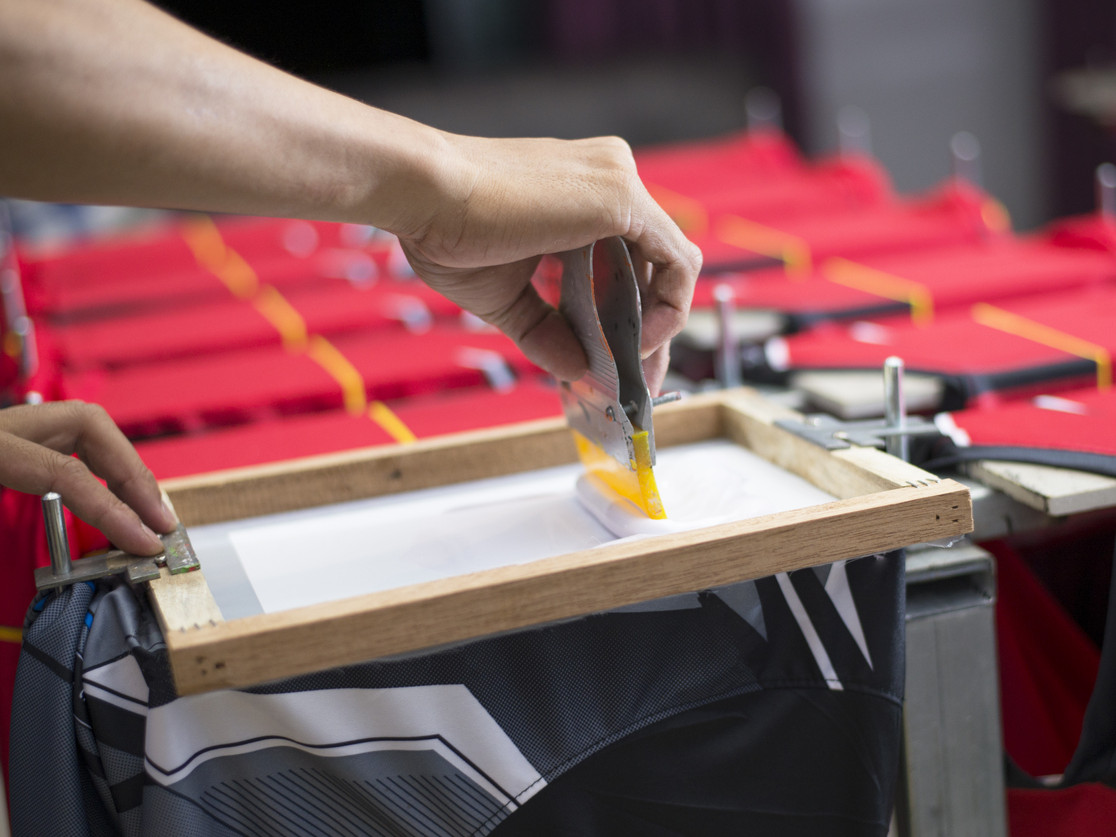
Promotional apparel and products are great at getting companies noticed. Mugs, sunglasses, t-shirts, and tote bags provide valuable opportunities for you to build brand recognition with little effort. When it comes to trade shows, product launches, and important sales presentations, you will want to be fully prepared with a bevy of unique giveaways and promotional items that prospective customers can appreciate. Have you thought about which printing method will be best for the promotional products you’ve chosen? Before you rush off to the printers, let MSP Design Group teach you a thing or two about the printing equipment required for some of the most popular printing processes.
Direct to Garment
Although it is a relatively new technique, DTG printing is popular amongst professionals and hobbyists alike. To start, you will need a digital printer that is compatible with your computer, graphic design software to mock up custom designs, a pretreating machine to prepare the garments, a heat press to dry the garments and cure the fabric once printing is complete, and water-based inkjet ink in a variety of colors.
Heat Press
This printing method is easy even for beginners, but it may not be the best option for bulk printing due to cost. You will need an adequately sized heat press for a typical production run. Clam shell and swing-away heat press machines are ideal for clothing and other flat items whereas cylinder-shaped presses are best for three-dimensional items. You will also need a large size format printer that uses dye sublimation ink as well as a computer with graphic design software, transfer paper, heat pads, heat-resistant sheeting, heat tape to hold the transfer paper in place, a felt heat eraser to dissipate heat, and a stock of blank goods.
Screen Printing
Of all the printing processes out there, silkscreen printing is probably the most complex in terms of equipment. That’s precisely why screen printing is often left to the professionals. To start, you will need a stencil and a nylon mesh screen to hold the template in place. You will need to flood the screen with ink and use a squeegee to press down, spreading the ink all over the screen. Excess ink should be wiped away. The design then cures and dries until it’s complete. In reality, professional screen-printing businesses have at least a six-color manual press, a conveyor dryer, a flash dryer, an exposure unit, a washout booth, a power washer, a heat press, a film output device, ink, and other necessities.
Sublimation
Although heat press printing and dye-sublimation are similar in technique, the difference boils down to science. When heated, sublimation ink turns from a solid to a gas that sets into the fabric. Once it cools, the ink returns to a solid and becomes a permanent part of the fabric. You will need a large commercial printer, a wide-format heat press, a computer with graphic design software, raster image processor (RIP) software, dye-sublimation inks, heat transfer paper, cutting equipment, a sewing device, a SEG system, media, and an array of additional production tools.
Printing your own promotional merchandise may seem like an easy way to eliminate intermediaries and save money in the long run, but the cost of printing equipment and the experience required may be more of a burden to your business than you might realize. If you are looking for a printing professional you can trust, you have come to the right place. We have more than 30 years of experience in printing and promotional services. Our production facilities house automatic presses, manual presses, and cutting-edge printers, allowing us to produce over one million shirts per year for a wide variety of clients. Contact us today to learn more about our services and let us know about your promotional needs.




